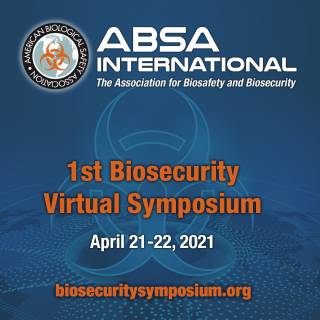Here some of the key lessons learnt
Biosafety: Keep bugs away from people, Biosecurity: Keep people away from bugs.
A lot of new labs have been set up for analysing COVID-19 samples. Proper training, also in biosafety and biosecurity is difficult. Local biosafety organisation were crucial, almost like a grass root type of action.
Security has to be reasonable. Different points of view are necessary to be reasonable, so a system of communication is needed to develop balanced requirements in biosecurity governance. Feedback loops are required between design and implementation. A White Paper and virtual global biosecurity dialogue has been initiated by the Visibility Initiative for Responsible Science, VIRS.
What constitutes a security concern should be a subject of debate and analysis. Reimagine dual use as a feature of all biology! Anything can be a concern. Lack of data and past examples makes it difficult to address issues reasonably. It might not always be possible to be aware of biosecurity issues ahead.
How can we encourage funders of research to be more aware of biosecurity issues? Which role do they have in considering biosecurity in addition to biosafety? Biosecurity research is also worthwhile to be funded.
Proactive biosecurity is needed in order to close some of the past reactive strategies. Proactive biosecurity should focus on the people as an important biosecurity issue.
The Canadian Centre for Biosecurity has a risk-based approach to biosecurity rather than strictly adhering to a list of pathogens. For handling security sensitive biological agents, SSBA, and toxins a biosecurity plan is necessary.
The Dutch biosecurity office (DBO) supports government and biosafety advisors regarding biosecurity including webinars. The DBO provides self-assessment tools to identify biorisk gaps and enhance biorisk awareness and a biosecurity checklist for laboratory assessment and monitoring. The tools also allow for a biosecurity vulnerability scan for organizations, i.e. mitigation of insider threats.
A biosecurity management framework should have four pillars: Governance, risk assessment and management, implementation and operation, biorisk management review.
Fundamental gaps exist between risk and threat assessment and management. Threats act upon the biological agent, risks result in consequences from biological agents. In biosecurity threat plus vulnerability equals risk. Assets and vulnerabilities have to be prioritized in order to define the risk. Threats concern several management programs (biorisk, EHS, quality control, site-management, chemical safety…) within an institution with a cascading effect, therefore connection between programs are crucial for dealing with threats.
The COVID-19 pandemic demonstrates the vulnerabilities to bioterroristic attacks/bioweapons actions. A global biosecurity dialogue is needed.
Wildlife-based pandemic events have always happened and play a role in most important infectious diseases. Of 1407 human pathogens 816 are zoonotic, 177 are (re)emerging diseases (Woolhouse, EID, 11(12), 2005). Spillover from wildlife to humans happens either by amplification and spread or by mutation and spread. Control of spillover is difficult: Eliminate threat species? Assess the risk by asking what is out there, can it spill over, how likely is it to spill over? Is hunting for zoonotic pathogens gain of function research? Change of human behaviour, that is, prevention of exposure of humans, environmental protection? Wildlife transport on a global scale is significant and difficult to tackle due to fragmented governance and regulatory approaches.
Access control to vaccine manufacturing facilities is a really important biosecurity topic. Security sector and first responders need to be trained on biosecurity.
Disinformation and misinformation is undermining a lot of biosafety and biosecurity efforts. In the context of global human health plans.
Security concerns: human and agricultural pathogens, narcotic production, material degradations, chemicals and toxins - All have economic implications, many have ecological implications. The ability for bioengineering to do harm rises in parallel with the ability to result in harm.
